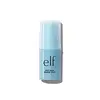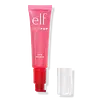What's inside
What's inside
 Key Ingredients
Key Ingredients

 Benefits
Benefits

 Concerns
Concerns

 Ingredients Side-by-side
Ingredients Side-by-side

Propylene Glycol
HumectantWater
Skin ConditioningAloe Barbadensis Leaf Juice
Skin ConditioningBis-PEG-18 Methyl Ether Dimethyl Silane
EmollientSodium Stearate
CleansingButylene Glycol
HumectantSodium Acrylates Copolymer
Phenoxyethanol
PreservativePEG-150 Distearate
EmulsifyingLecithin
EmollientSodium Chloride
MaskingPEG-40 Hydrogenated Castor Oil
EmulsifyingCitric Acid
BufferingEthylhexylglycerin
Skin ConditioningSea Water
HumectantGlycerin
HumectantSodium Hyaluronate
HumectantPotassium Sorbate
PreservativeSodium Benzoate
MaskingCocos Nucifera Water
MaskingTocopherol
AntioxidantButyrospermum Parkii Butter
Skin ConditioningVitis Vinifera Seed Oil
EmollientTheobroma Cacao Seed Butter
EmollientCI 42090
Cosmetic ColorantCI 19140
Cosmetic ColorantPropylene Glycol, Water, Aloe Barbadensis Leaf Juice, Bis-PEG-18 Methyl Ether Dimethyl Silane, Sodium Stearate, Butylene Glycol, Sodium Acrylates Copolymer, Phenoxyethanol, PEG-150 Distearate, Lecithin, Sodium Chloride, PEG-40 Hydrogenated Castor Oil, Citric Acid, Ethylhexylglycerin, Sea Water, Glycerin, Sodium Hyaluronate, Potassium Sorbate, Sodium Benzoate, Cocos Nucifera Water, Tocopherol, Butyrospermum Parkii Butter, Vitis Vinifera Seed Oil, Theobroma Cacao Seed Butter, CI 42090, CI 19140
Water
Skin ConditioningButylene Glycol
HumectantGlycerin
HumectantPEG-150 Distearate
EmulsifyingPolysorbate 80
EmulsifyingCitrullus Lanatus Fruit Extract
Skin ConditioningNiacinamide
SmoothingRetinyl Palmitate
Skin ConditioningSodium Ascorbyl Phosphate
AntioxidantSodium Hyaluronate
HumectantPentylene Glycol
Skin ConditioningPEG-240/Hdi Copolymer Bis-Decyltetradeceth-20 Ether
StabilisingPhenoxyethanol
PreservativeEthylhexylglycerin
Skin ConditioningCaprylyl Glycol
EmollientParfum
MaskingDisodium EDTA
CI 16035
Cosmetic ColorantWater, Butylene Glycol, Glycerin, PEG-150 Distearate, Polysorbate 80, Citrullus Lanatus Fruit Extract, Niacinamide, Retinyl Palmitate, Sodium Ascorbyl Phosphate, Sodium Hyaluronate, Pentylene Glycol, PEG-240/Hdi Copolymer Bis-Decyltetradeceth-20 Ether, Phenoxyethanol, Ethylhexylglycerin, Caprylyl Glycol, Parfum, Disodium EDTA, CI 16035
Ingredients Explained
These ingredients are found in both products.
Ingredients higher up in an ingredient list are typically present in a larger amount.
Butylene Glycol (or BG) is used within cosmetic products for a few different reasons:
Overall, Butylene Glycol is a safe and well-rounded ingredient that works well with other ingredients.
Though this ingredient works well with most skin types, some people with sensitive skin may experience a reaction such as allergic rashes, closed comedones, or itchiness.
Learn more about Butylene GlycolEthylhexylglycerin (we can't pronounce this either) is commonly used as a preservative and skin softener. It is derived from glyceryl.
You might see Ethylhexylglycerin often paired with other preservatives such as phenoxyethanol. Ethylhexylglycerin has been found to increase the effectiveness of these other preservatives.
Glycerin is already naturally found in your skin. It helps moisturize and protect your skin.
A study from 2016 found glycerin to be more effective as a humectant than AHAs and hyaluronic acid.
As a humectant, it helps the skin stay hydrated by pulling moisture to your skin. The low molecular weight of glycerin allows it to pull moisture into the deeper layers of your skin.
Hydrated skin improves your skin barrier; Your skin barrier helps protect against irritants and bacteria.
Glycerin has also been found to have antimicrobial and antiviral properties. Due to these properties, glycerin is often used in wound and burn treatments.
In cosmetics, glycerin is usually derived from plants such as soybean or palm. However, it can also be sourced from animals, such as tallow or animal fat.
This ingredient is organic, colorless, odorless, and non-toxic.
Glycerin is the name for this ingredient in American English. British English uses Glycerol/Glycerine.
Learn more about GlycerinPeg-150 Distearate is an emulsifier and thickening agent. It is created from stearic acid.
As an emulsifier, peg-150 distearate helps other ingredients dissolve. This helps prevent ingredient separation.
This ingredient may not be Malassezia folliculitis, or fungal-acne safe.
Learn more about PEG-150 DistearatePhenoxyethanol is a preservative that has germicide, antimicrobial, and aromatic properties. Studies show that phenoxyethanol can prevent microbial growth. By itself, it has a scent that is similar to that of a rose.
It's often used in formulations along with Caprylyl Glycol to preserve the shelf life of products.
Sodium Hyaluronate is hyaluronic acid's salt form. It is commonly derived from the sodium salt of hyaluronic acid.
Like hyaluronic acid, it is great at holding water and acts as a humectant. This makes it a great skin hydrating ingredient.
Sodium Hyaluronate is naturally occurring in our bodies and is mostly found in eye fluid and joints.
These are some other common types of Hyaluronic Acid:
Learn more about Sodium HyaluronateWater. It's the most common cosmetic ingredient of all. You'll usually see it at the top of ingredient lists, meaning that it makes up the largest part of the product.
So why is it so popular? Water most often acts as a solvent - this means that it helps dissolve other ingredients into the formulation.
You'll also recognize water as that liquid we all need to stay alive. If you see this, drink a glass of water. Stay hydrated!
Learn more about Water